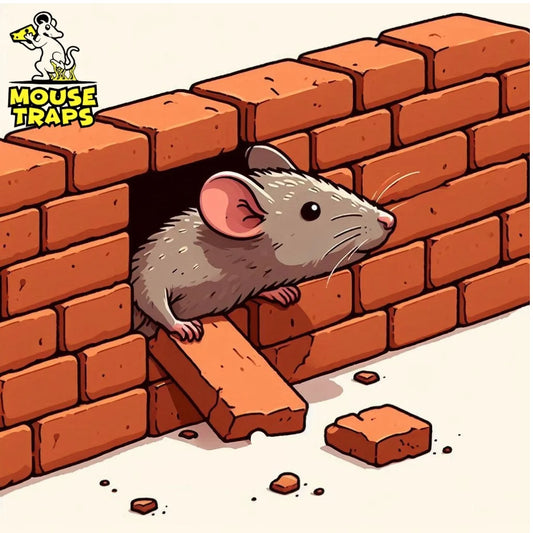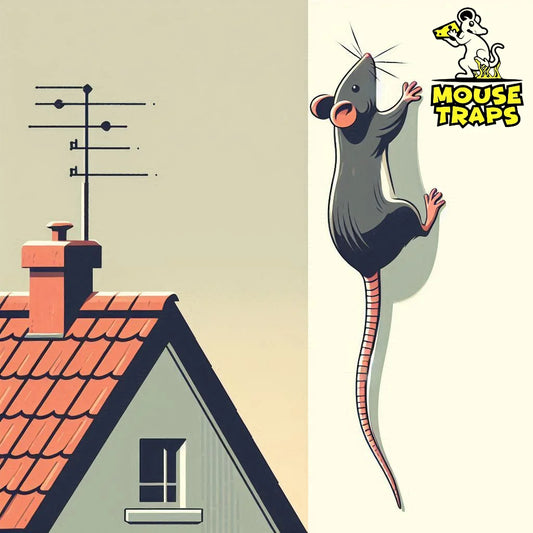Introduction:
Imagine this: you've poured your heart and soul into your agricultural grain store or silo, meticulously tending to your crops, only to find it besieged by unwelcome guests—rats. Those troublesome pests not put your grains at risk. Also bring about health concerns and financial setbacks. However fret not as this guide will explore how to deal with rat invasions, on farms by using the yet mouse trap as our primary tool.

Understanding the Enemy:
Before we dive into the tactics of eradication, let's first familiarize ourselves with the signs indicating a rat infestation. Mice are animals, skilled, at concealing their whereabouts until their population grows to a size. Look out for telltale signs such as:

- Droppings: One of the most obvious indicators of a rat infestation is the presence of their droppings. These fecal pellets are typically dark and tapered, resembling grains of rice, and can be found scattered near food sources or along runways.
- Gnaw Marks: Rats possess powerful incisors that grow continuously, compelling them to gnaw on various materials to keep them trimmed. Keep an eye out for gnaw marks on wooden structures, plastic containers, or even electrical wiring.
- Nesting Materials: In their quest for shelter, rats will scavenge any available materials to construct their nests. Shredded paper, fabric, insulation, and even vegetation may be gathered and woven into nests hidden within the nooks and crannies of your grain storage facility.
- Footprints and Smudge Marks: Rats are not the most fastidious creatures and may leave behind smudge marks or footprints along their habitual pathways, particularly in dusty or sooty environments.

The Battle Plan: Employing Mouse Traps for Effective Rat Eradication
Now that we've identified the enemy, it's time to devise our strategy. While the market may be inundated with a plethora of rodent control products, ranging from poisons to ultrasonic devices, none can rival the simplicity and efficacy of the humble mouse trap. Here's how to deploy them effectively:

1. Choose the Right Trap for the Job
Mouse traps come in various shapes and sizes, each suited to different environments and preferences. Traditional snap traps, though rudimentary in design, remain highly effective when placed along rat runways or near feeding areas. For a more humane approach, consider live-catch traps that allow for the capture and release of rats elsewhere.
2. Proper Placement is Key
To maximize your trap's effectiveness, strategic placement is paramount. Rats are creatures of habit, favoring familiar routes and hiding spots. Position traps along walls, near entry points, or adjacent to burrows, ensuring they are out of reach of children or pets.

3. Baiting for Success
While rats are notorious scavengers with diverse dietary preferences, they exhibit a particular fondness for high-protein foods such as peanut butter, bacon, or nuts. Place a bit of bait on the trigger of your trap to lure rodents into their fate.

4. Monitor and Maintain
Once your traps are set, maintain a vigilant watch, checking them regularly for signs of activity. Replace bait as needed and reset traps promptly to maintain their efficacy. Remember, consistency is key to achieving lasting results.
FAQs:
Conclusion:
In the battle against rat infestations in agricultural grain stores and silos, knowledge is your greatest ally. By recognizing the signs of an infestation, employing strategic trapping techniques, and adopting proactive prevention measures, you can reclaim your grain stores from the clutches of these unwanted intruders. Remember, persistence and diligence are key to achieving long-term success in rodent control. Armed with the insights provided in this guide, you can safeguard your crops, your health, and your livelihood from the threat of rodent infestations.




